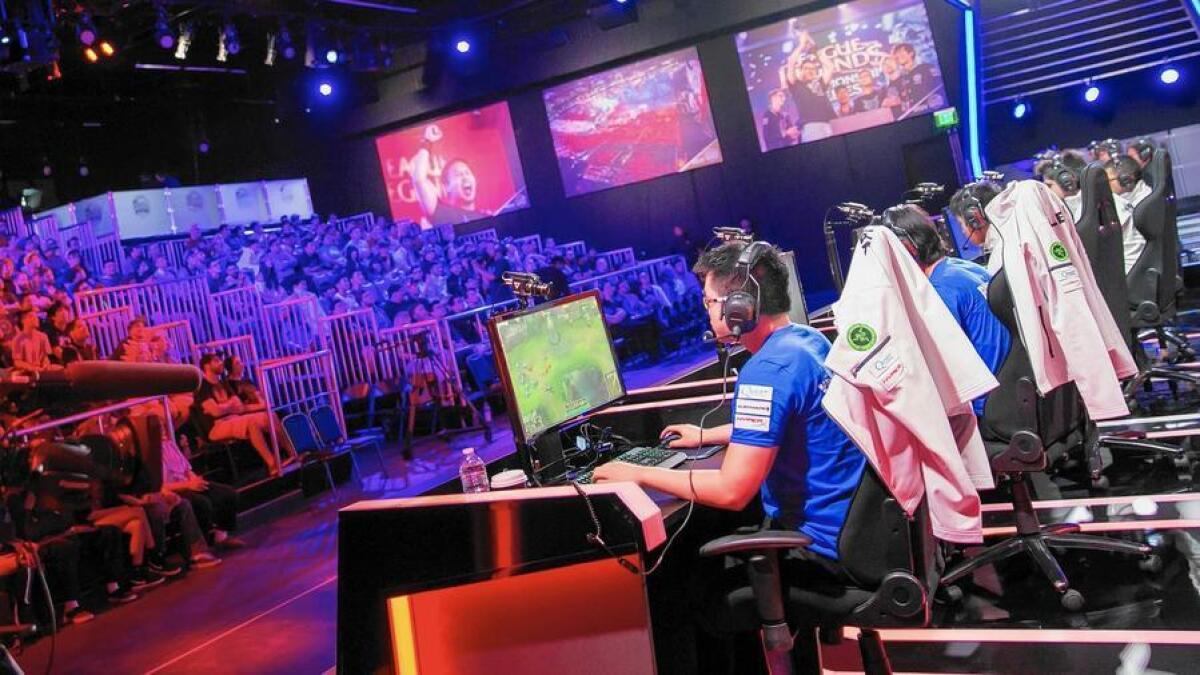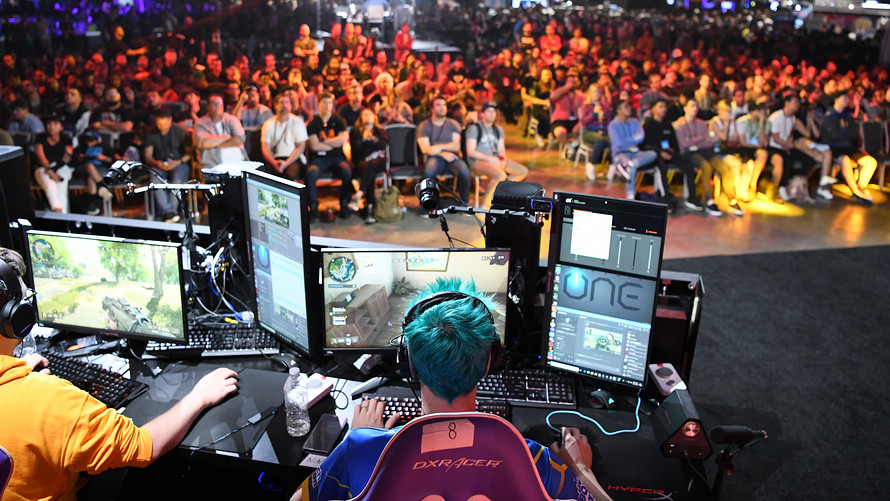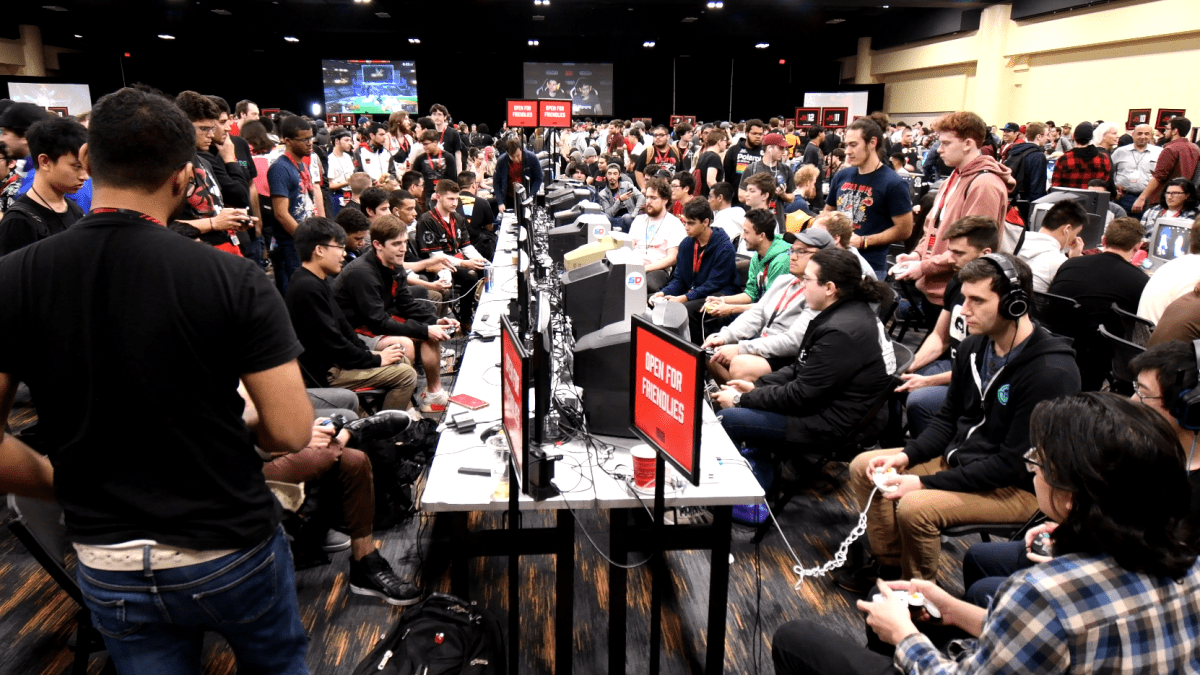Professional players, arranged leagues, world events, millions of subscribers… Video games started as a hobby played in the living room with a game console, but today it is a professional industry that works like the most popular sports competitions. We’ll tell you everything you need to know about esports in its unofficial capital, Los Angeles. More at la-future.
Gaming tradition in the United States

Video games have come a long way since their inception. They began among electrical engineers who used repurposed military equipment to move dots on radar screens. Soon, games like Pong and Pac-Man became a phenomenon of gaming culture. In the nineteenth century, the video game industry developed at breakneck speed. Much of the sector is concentrated in Southern California.
Video gaming is far from a niche industry: according to industry data provider Newzoo, as of 2020, approximately 2.7 billion people, or 35% of the world’s population, play video games on one or more platforms. With many people forced to stay at home over the past year and a half to avoid the spread of the coronavirus, many people have become interested in video games to pass the time. This led to a 5% increase in the number of users from 2019 to 2020.
Video games also have significant growing economic power. In 2020, global video game revenue grew by 20% year-on-year to $174.9 billion. This is more than the $100 billion generated by the global film industry in 2019 and more than the $75 billion generated by American professional sports. As the demand for games grows, so does the number of games released each year. Steam, the digital publishing platform for PC games, recorded more than 10,000 new games published on its platform in 2020, both professional and independent.
Development of esports in California

For some, competitive video games, more commonly known as “eSports”, may seem like a recent trend. But eSports in one form or another, have been around since the inception of video games themselves. Space War, considered to be the first video game in history, was used for competition among Stanford University students and staff in 1972.
Other in-person competitions took place when video games entered the home console market, such as the Atari Space Invaders competition in 1980 and the Nintendo World Championships in 1990, which were held at Universal Studios Hollywood.
In the mid-1990s, cyber games began to develop rapidly. The widespread adoption of the Internet made it possible to play games online and connect players over long distances.
Internet cafes have sprung up all over the world, allowing players without high-end computers or a decent internet connection to compete. As the online landscape has changed and computer technology has evolved rapidly, the barrier to competitive gaming has decreased. The emergence of streaming platforms such as YouTube and Twitch has allowed gamers and competitors to broadcast their matches to an audience of millions around the world.
With nearly 3 billion people playing games, Asia Pacific accounts for 54% of the global player base. Despite its size, the region generates significant revenue for the global video game market. In 2020, North America generated $44.7 billion in revenue, or 26% of global video game revenue that year. Due to an increase in the number of people playing games during the pandemic and the release of new console hardware at the end of 2020, revenue in North America grew by 21.4% year-on-year.
Esports revenue is growing

Esports has come a long way since the first Space War tournaments at Stanford. As of 2020, gaming revenue worldwide amounted to $950 million. The digital presence of the industry has allowed esports to remain largely insulated from disruption during the spread of the coronavirus pandemic. Global revenues fell by only 1.1% from 2019 to 2020 as most face-to-face venues were closed and competitions moved online.
The sector’s resilience is supported by the fact that the bulk of the industry’s revenue comes from corporate sponsorships, brand deals and licensing fees rather than from in-person ticket sales. Due to the effects of the coronavirus pandemic, revenue from digital and streaming services grew by 60.9% and 44.9% in 2019 and 2020, respectively. Esports organizations have also attracted a lot of interest from external investors. According to Pitchbook, the esports sector has raised over $4.8 billion in venture capital since 2017.
Esports is largely an industry that was born, grew up and still exists in cyberspace. But this has not prevented esports competitions from quickly moving into the “real” world, which has created a need for special venues where both participants and fans can play. While this concept may seem new, specialized esports venues have existed for some time in China, Korea, and Japan, first as internet cafes and now as arenas. This concept has become widespread only in the last few years. Since 2017, approximately 380,000 square feet of esports venues have been completed in the United States.
Northern California Esports League

The Northern California Esports League (NCEL) and NCEL-Middle School (MS) are organized under the auspices of the Division of Statewide and Local Support Services of the Butte County Office of Education. Their mission is to use esports as a platform for all students to learn critical communication, collaboration, and problem-solving skills that will enable lifelong learning.
In partnership with the North American Scholastic Esports Federation (NASEF) as the program’s first affiliate, NCEL provides a range of programs, tools, and services to members of the predominantly rural and junior high league to enable program launch and development on their campuses.
NCEL-MS is the first high school league in the country to operate and hosts teams across the Western United States in Rocket League, Smash Bros and Mario Kart. As evangelists for the entire eSports ecosystem and career ladder, NCEL is uniquely positioned to help members combine the learning experience and cutting-edge curriculum with our competitive efforts.
Esports camps in California

Headquartered in San Rafael, the United States Sports Camps (USSC) is the largest sports camp network in America. The company has been offering summer camps since 1975 with the same mission that remains today: to build a lifelong enjoyment of esports through high-quality sports education and training.
All camp participants train in one of the best places in the US – Esporterz. It is the best state-of-the-art gaming center in Marin County, equipped with dedicated gaming PCs, Logitech Pro peripherals, 240Hz and 144Hz monitors, high-performance Vertagear gaming chairs and a dedicated high-speed fiber optic connection. From youth eSports leagues and camps to STEM classes and birthday parties, Esporterz is committed to providing exciting opportunities for new and experienced gamers to develop and strengthen their skills in a positive, safe and fun environment.


